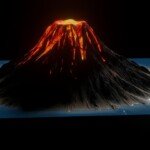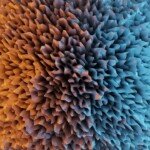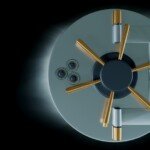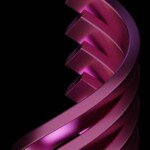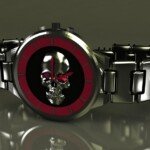Lighting Design: Art and Innovation of 3D Printed Candlesticks
Candle holders have evolved from utilitarian objects to sculptural artworks that define the atmosphere. With the advent of 3D printing, especially Metal– Designers and brands can now create sophisticated custom structures that were once considered impossible. This guide explores the science and creativity behind metal 3D printing candlesticks, exploring design principles, material advantages and real-world application workflows.
Why 3D printing candlesticks? Exceeding traditional restrictions
Traditional manufacturing methods (such as casting or processing) limit the design of candlesticks and have limitations:
- Geometric complexity: Complex lattices, organic curves, or internal channels are expensive or infeasible.
- Custom: Mass production kills personalization.
- Material Waste: The subtraction method can discard up to 80% of the raw material.
Metal 3D printing (additive manufacturing) destroys these obstacles. Using laser layer by layer fusing metal powder, it can:
- Unprecedented freedom: Create porous structures that mimic lace, dendritic patterns, or algorithmic fractals.
- Lightweight power: The hollow geometry can reduce weight while maintaining rigidity.
- Integrated features: Embed features such as hidden drip trays, ventilation holes or snapshot components.
Brands like brightness brands Great What you are good at here is to use industrial-grade machines such as DMLS/SLM to turn visionary designs into quality end-use products.
Design of Metal 3D Printing: Technical Guide
Designing candlesticks requires a balance of artistic, physical and printability:
1️⃣Thermal Management
Candles generate heat (up to 140°C). The risk of poor design distortion or user injury.
- Solution:
- Wall ≥2mm thick: Prevent heat from accumulating in subtle features.
- Heat dissipation: Integrate a perforated or grooved base to enable airflow.
- Material selection: Choose high conductivity metals such as aluminum or thermally stable alloys (such as titanium).
2️⃣Structural integrity
Overhanging, thin support and asymmetrical shapes can cause printing failures.
- Solution:
- Self-supported perspective: Keep the overhang ≤45° to avoid collapse.
- Pressure simulation: Use FEA tools (such as ANSYS) in your prototype to detect weaknesses. Greatlight’s team performs virtual verification preprints to eliminate flaws.
3️⃣Aesthetics and Functional Fusion
- Surface texture: Glossy laser color finish or intentionally rough surface for diffusing light.
- Candle compatibility: Adjust the taper inner diameter (e.g., 30 mm basic celestial bodies that prevent instability).
- Modular: Design interlock segments for flat packaging or reconfiguration.
Metals and Polymers: Why Metals Dominate High-End Candlesticks
| factor | Polymer 3D printing | Metal 3D printing (DMLS/SLM) |
|---|---|---|
| Heat resistance | Deformation at 60-100°C | Stable to 900-1,400°C |
| Durability | Easy to scratch/UV fade | Anti-scratch, lifelong use |
| Aesthetic Value | "plastic" appearance | Luxury metal finish (Polish, brush, combined) |
| Ecological impact | Limited recyclability | 100% recyclable powder waste |
Metal printing provides heirloom quality works. For example, a Greatlight customer with a generative Voronian pattern exhibits 40% heat dissipation than a cast copper or the like.
Great Advantage: Post-processing accuracy
Work with industrial metal 3D printing experts Great make sure:
- Material versatility: Stainless steel (corrosion resistant), aluminum (lightweight), brass (antique aesthetics) or nickel alloy.
- One-stop completion:
- The machining thread of candle insertion.
- Non-destructive testing (NDT) of porosity defects.
- Custom plating, sanding or hand polishing.
- Fast Market: Rapid prototype (1-3 days) and scalable generation.
Case study: A luxury decor brand uses Greatlight, which can produce 500 units of multi-layer titanium holders. The integrated lattice structure reduces weight by 55% without sacrificing load capacity.
Step by step: Design your 3D printed candle stand
- Concept sketch: Define aesthetic goals (minimal, baroque, bionic).
- CAD Modeling: Use Fusion 360 or Tinkercad. hint: A comfortable candle is suitable for offsetting the inner wall by 0.5mm.
- simulation: Stress testing virtual prototype.
- File optimization: Export as hollow .Step files to reduce material costs.
- Printing Partners: Upload the design to the platform for instantaneous DFM feedback from Greatlight.
- Post-processing: Select finish-eg, black oxide coating for drama, or mirror polish for candlelight reflection.
Conclusion: Use metal 3D printing to ignite the future
3D printed metal candle holders represent the synergy between tradition and innovation. They offer unlimited design language, uncompromising features and lasting value – converting everyday objects into conversational works.
For creators, designers or brands, Great From concept to completion of industrial grade metal 3D printing solutions. With cutting-edge DMLS/SLM technology and interior finishes, we ensure your vision shines in tangible perfection.
🔗 Ready to clarify your thoughts? Submit your designs today on Greatlight to be made at groundbreaking speed and value.
FAQ: 3D printed candle holder
Q1: Is 3D printed metal candle holders safely using real candles?
Yes! When properly processed, metal 3D printing uses completely dense non-combust materials. Greatlight performs thermal stress tests to ensure compliance with safety standards. Avoid using open polymers.
Q2: How complicated is my design?
Complexity is free in additive manufacturing. Greglight has produced brackets with 0.2mm wall thickness, nested balls and interlocking components. Our engineers provide advice on feasibility preprinting.
Q3: Which metal is best for outdoor candlesticks?
Stainless steel 316L or titanium for corrosion resistance. Paints (such as PVD) add additional weather protection.
Question 4: Can you copy traditional metalworking finishes (e.g. hammered copper)?
Expert post-processing, such as chemical bonding or CNC textures, can implement these functions faster and more consistently.
Q5: What is the delivery time for 50 custom units?
Prototype: 3-5 days. Large batches: 2–3 weeks, including completion. Greatlight prioritizes fast turnaround without quality compromise.
Question 6: Do you assist in design optimization to reduce costs?
Absolutely. Our team provides designs for additive manufacturing (DFAM) analysis, i.e. well volume, optimization support, and material selection to meet budgetary goals.
Question 7: How sustainable is metal 3D printing?
Greglight Recycles> 95% unused powder. Topological optimization reduces material waste by 70% compared to processing.
Turn light into artistic. Partner with Greatlight – Innovative lighting. ✨



